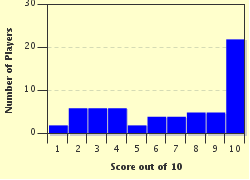Quiz Answer Key and Fun Facts
1. His name might not be familiar to most, so we will start off rather easy. Alfred Russel Wallace is most well known for ideas that led to one of the most famous theories in biology, although a contemporary of his is far more well known for the same ideas. Can you name the theory?
2. Wallace was quite the jack of all trades, having worked many different jobs in his young adulthood. In which of the following fields did Wallace never work?
3. Inspired by the voyages of Charles Darwin, Alexander von Humboldt, and William Henry Edwards, the 25 year-old Wallace set sail for Brazil in 1848 accompanied by entomologist Henry Bates. What was the name of the ship they were aboard?
4. From 1854 to 1862, Wallace explored the Malay archipelago (modern day Malaysia and Indonesia), collecting specimens of various species. It was here that Wallace discovered a distinct difference in species on both sides of the Lombok strait, and proposed a zoogeographical boundary now called the Wallace Line. This line separates two ecozones, namely Asia and what other zone, also named after Wallace?
5. During his exploration of the Malay archipelago, Wallace wrote extensive descriptions of the amphibian species Rhacophorus nigropalmatus. Wallace observed this species "parachuting" from high in the trees down to the forest floor. What is this acrobatic organism better known as?
6. Wallace and Darwin exchanged several letters concerning their ideas during the 1850s, while Wallace was still exploring the Malay archipelago. On July 1st, 1858, Wallace's essay "On The Tendency of Varieties to Depart Indefinitely from the Original Type" and Darwin's essay "Extract from an unpublished Work on Species" were read in a joint presentation to what famous organization of taxonomists and naturalists?
7. Although Darwin's and Wallace's ideas on evolution were very similar, there were a few differences. Darwin's theory focused somewhat on natural selection being driven by competition between individuals of the same species. On the other hand, Wallace keyed in on what mechanism of natural selection?
8. In 1889, Wallace wrote a book entitled "Darwinism", which described and defended the idea of natural selection. One of Wallace's main ideas in this publication later came to be known as the Wallace Effect. What concept does the Wallace Effect describe?
9. Sometime after 1864, Alfred Wallace became a spiritualist. During this time, Wallace became convinced that natural selection and evolution alone could not adequately account for some specific biological phenomena. Wallace cited three events which he thought must have been caused by "the unseen universe of Spirit". Which is not one of the three events?
10. Eight years before his 1913 death due to apparently natural causes, Alfred Russel Wallace published one final book; his autobiography. What was its title?
Source: Author
slapchop
This quiz was reviewed by FunTrivia editor
Snowman before going online.
Any errors found in FunTrivia content are routinely corrected through our feedback system.

